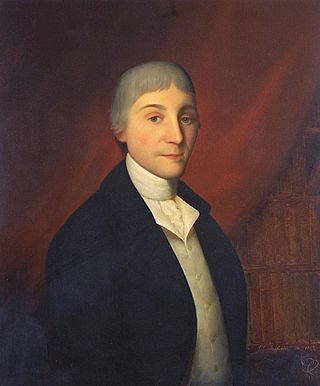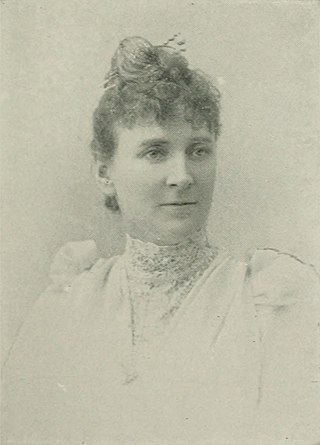Drowne and popular variant Drown are surnames which originated in Yorkshire, England. Many branches of this family dropped the E during the late 18th century as a part of the American Spelling Reform movement, forming the surname Drown. It is possibly derived from the Middle English word "drane", or drone, the male honey bee.
The first Drowne/Drown in North America was Leonard Drowne (1646–1729) who came from Penryn, Cornwall to what was then part of Kittery in Massachusetts soon after the Restoration (England) of the monarchy in 1660. Leonard, a ship-wright, established a shipyard near Sturgeon Creek in what is now Eliot, York County, Maine. Leonard married Elizabeth Abbott of Portsmouth, New Hampshire around 1675. Leonard helped organize and build the first Baptist Church in Maine in 1682. During King William's War, many Maine towns were raided and English settlements were massacred by the Wabanaki people in conjunction with the French. In 1696, 28 members of the Baptist Church moved to Charleston, South Carolina and established the first Baptist church there while the Drownes moved to Boston, Massachusetts in 1699, due to the ongoing war and violence. After Elizabeth Abbott died, Leonard married his also-widowed sister-in law, Mary (Abbott) Caley. This marriage was performed by the Rev. Cotton Mather in Boston, November 4, 1707. Leonard Drowne died in Boston, October 31, 1729. Leonard Drowne and other early members of the family are buried in Copps Hill Cemetery in Boston.
- Shem Drowne, colonial American weather vane maker, son of Leonard Drowne
- Solomon Drowne, American Revolutionary War surgeon, grandson of Leonard Drowne
- Henry Thayer Drowne, President of National Fire Insurance Company of New York, grandson of Solomon [1] and President of the New York Genealogical and Biographical Society
- Henry Russell Drowne, son of Henry Thayer Drowne, New York businessman of Lawrie, Mann & Drowne, an officer of Sons of the Revolution in New York State, American Numismatic Society, Society of the Cincinnati, New-York Historical Society, New York Genealogical and Biographical Society, and author of books on genealogy and Fraunces Tavern.
- Frederick Drowne, an officer in the American Revolution and Representative to the General Court of Massachusetts from Rohobeth, Massachusetts from 1787-1781 and 1799–1804 and delegate of the Massachusetts Ratifying Convention of the U.S. Constitution in 1788
- Samuel Drowne, American Revolutionary War soldier and colonial silversmith from Portsmouth, New Hampshire [2]

Paul Revere was an American silversmith, engraver, early industrialist, Sons of Liberty member, and Patriot. He is best known for his midnight ride to alert the colonial militia in April 1775 to the approach of British forces before the battles of Lexington and Concord, as dramatized in Henry Wadsworth Longfellow's 1861 poem, "Paul Revere's Ride".

Eliot is a town in York County, Maine, United States. Originally settled in 1623, it was formerly a part of Kittery, Maine, to its east. After Kittery, it is the next most southern town in the state of Maine, lying on the Piscataqua River across from Portsmouth and Newington, New Hampshire. The population was 6,717 at the 2020 census. It is part of the Portland–South Portland–Biddeford, Maine metropolitan statistical area.

Kittery is a town in York County, Maine, United States. Home to the Portsmouth Naval Shipyard on Seavey's Island, Kittery includes Badger's Island, the seaside district of Kittery Point, and part of the Isles of Shoals. The southernmost town in the state, it is a tourist destination known for its many outlet stores.

The Boston Brahmins or Boston elite are members of Boston's traditional upper class. They are often associated with Harvard University, Anglicanism, and traditional Anglo-American customs and clothing. Descendants of the earliest English colonists are typically considered to be the most representative of the Boston Brahmins. They are considered White Anglo-Saxon Protestants (WASPs).

Alexander Parris was a prominent American architect-engineer. Beginning as a housewright, he evolved into an architect whose work transitioned from Federal style architecture to the later Greek Revival. Parris taught Ammi B. Young, and was among the group of architects influential in founding what would become the American Institute of Architects. He is also responsible for the designs of many lighthouses along the coastal Northeastern United States.

Dr. Solomon Drowne was a prominent American physician, academic and surgeon during the American Revolution and in the history of the fledgling United States.

Abbott Handerson Thayer was an American artist, naturalist and teacher. As a painter of portraits, figures, animals and landscapes, he enjoyed a certain prominence during his lifetime, and his paintings are represented in the major American art collections. He is perhaps best known for his 'angel' paintings, some of which use his children as models.

Deacon Shem Drowne was a colonial coppersmith and tinplate worker in Boston, Massachusetts, and was America's first documented weathervane maker. He is most famous for the grasshopper weathervane atop of Faneuil Hall, well known as a symbol of Boston.

Charles Cutts was an attorney and politician from New Hampshire. Among the offices in which he served were Speaker of the New Hampshire House of Representatives, United States Senator and Secretary of the United States Senate.
Christopher Helme was an early immigrant to the Massachusetts Bay Colony and one of the founders of Exeter, New Hampshire.

Otis C. Norcross served as the nineteenth Mayor of Boston, Massachusetts, from January 7, 1867 to January 6, 1868 during the Reconstruction era of the United States. Norcross was a candidate (1861) for the Massachusetts State House of Representatives; served as a member of the Boston Board of Aldermen from January 6, 1862 to January 2, 1865; chairman of the Boston Board of Aldermen from January 4, 1864 to January 2, 1865; and served as a trustee of the City Hospital, 1865 & 1866; and a member of the Massachusetts Governor's Council, under Gov. William Claflin (1869).
Drown is a surname which originated in Yorkshire, England. It is the Americanization of the Surname Drowne. Many branches of this family dropped the E during the late 18th century as a part of the American Spelling Reform movement, forming the surname Drown. It is possibly derived from the Middle English word "drane", or drone, the male honey bee.
Edmund Kelly was the first African-American Baptist minister ordained in Tennessee. He escaped slavery in the 1840s to New England and returned after the US Civil War. He worked as a preacher and teacher in Columbia, Tennessee and was a frequent participant in national Baptist Conventions.

David Thompson or David Thomson (1588–1628) was the first governor of Massachusetts under the 1622 Council for New England grant to Robert Gorges. He also held the 6000-acre 1622 Piscataqua grant under the Council and is considered the founder and first non-native settler of New Hampshire. In addition, Thomson was granted a patent for Thompson Island in Boston Harbor which to this day bears his name. According to Burke's Landed Gentry (2010) the Thomsons of Corstorphine are direct descendants of a great-grandson of King Robert II, namely, Sir Thomas Stewart, Master of Mar.

Ellen "Nelly" Thayer Fisher was an American botanical illustrator. Fisher exhibited her paintings at the National Academy of Design and other exhibitions. She was an active contributor to the exhibitions of the American Watercolor Society, beginning in 1872. In addition to being shown in galleries and exhibitions, her paintings of flora and fauna were widely reproduced as chromolithographs by Boston publisher Louis Prang.

M. Lyle Durgin (1845-1904) was a 19th-century American artist from the U.S. state of Massachusetts, who specialized in portraiture and murals. A graduate of New Hampton Institute, New Hampshire, she studied art in Paris where she exhibited in the Salon. After returning to the US, she shared a studio with her sister, Harriet Thayer Durgin, in Copley Square, Boston. Durgin is remembered for designing and executing the murals at the First Congregational Church of Detroit, Michigan.

The 1944 New Hampshire Wildcats football team represented the University of New Hampshire in the 1944 college football season. The Wildcats were led by first-year head coach Herbert Snow and completed the season with a record of 1–3. The team played its home games at Lewis Field in Durham, New Hampshire.
Helen Rand Thayer was an American suffragist and social reformer. A pioneer in the settlement movement era, she was a co-founder and president of the College Settlements Association (CSA). She was also an alumnæ trustee of Smith College.
Andrew Robeson Jr. was an American merchant.













